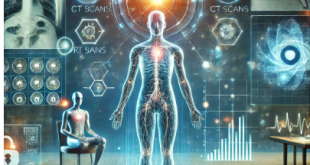Introduction
Cyber security is one of the issues that are most common today. As digital transformation exploded across industries, cyber threats evolve to target individuals, companies, and even governments. This report analyses the state of cyber security, recent threats, and best practices on how to safeguard against these challenges.
1. State of Cyber security Today
• Cyber attacks: How intense the increase in scale and complexity of cyber attacks has been-especially after the pivot to remote work.
• Primary Drivers: Discuss the drivers, both accelerating current factors and new factors, that make up cybersecurity threats. Advanced digital infrastructure, widespread connectivity, and expanded numbers of IoT devices are all current drivers.
• Most Common Threats:
Malware and Ransomware: Explain how these attacks work and how they can impact individuals and organizations.
o Phishing: Getting a glimpse of the future impact of phishing and winning because of human weaknesses.
o Zero-Day Exploits: How sophisticated attackers abuse unlearned flaws.
2. New Trends and Threats in Cyber Security
• AI and ML:
o For Attackers: The hackers are deploying AI for developing more personalized, adaptive attacks.
o For Defence: Organizations invest in AI to detect anomalies faster and respond accordingly.
• Quantum Computing:
o Threat: Quantum technology might break traditional encryption one day.
• Supply Chain Threats:
The threats from third-party software or hardware suppliers, as in the case of the Solar Winds hack.
3. Human Factors in Cyber Security
• Social Engineering: Describe how the cyber attackers exploit human psychology for security gains.
• Insider Threat: Any employee harboring malice or negligence, with the intent to do harm.
• Training Employees: Outline why it is essential for organizations to train their staff to prevent human errors. Describe how this can be conducted effectively in an organization.
4. Cyber Response of Governments and Corporations
• Global Cyber security Policies and Regulations:
Summary of the major regulations such as GDPR, HIPAA, and CCPA and how these have shifted the tides for data protection.
New trends of government-led cyber security programs such as the United States Cyber security and Infrastructure Security Agency (CISA).
• Corporate Security Measures:
Examples of the measures that large corporations have proactively taken: Zero Trust architecture, encryption, and enhanced monitoring.
5. What People and Businesses Can Do to Protect Themselves
• For Individuals:
Two-Factor Authentication (2FA): How 2FA offers a vital layer of security.
o Password Management: Importance of unique, strong passwords and use of password managers.
o Secure Your Personal Devices: Installation of current software and avoidance of public Wi-Fi for sensitive work
• For Businesses:
o Risk Assessment: Conducting regular vulnerability assessments and penetration testing
o Employee Training and Awareness: Providing cybersecurity training and simulations on regular frequencies.
o Building a Strong Incident Response Plan: Identifying, responding, and recovery process regarding attacks.
6. The Future of Cyber security: Where Are We Headed?
• Cyber Defense Automation: As much as possible, it will be automation that speeds up detection and response through minimal direct human intervention.
• IoT and Smart Devices Security: Preparing for the challenge IoT poses since it is still growing.
•Shared Cybersecurity Responsibility: All stakeholders, from government, to manufacturers, to users at large, working together for a safer digital space.
Conclusion
It is a constantly changing landscape, with rapid advances in technology and sophisticated cyber threats. Knowing what is happening now, where things are going, and best practices in digital security will help individuals and organizations to prepare against today’s digital dangers. But the fight for cyber security is ongoing, and as we move toward an active, collaborative defense.


